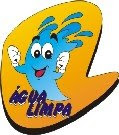“O mergulho em águas rasas é a quarta causa de lesão medular no Brasil, mas assume a segunda colocação durante os meses de verão. A cada semana cerca de dez pessoas ficam paraplégicas ou tetraplégicas ao bater a cabeça durante mergulho.”
Fonte: BARROS FILHO, T.E.P. Cuidados ao Mergulhar. São Paulo: Pool-Life, 2004. n. 63/64.
SPINAL CORD INJURY IMMOBILIZATION IN THE AQUATIC ENVIRONMENT
Purpose
The Spinal cord injury (“SCI”) is an all too common accident to occur in the aquatic environment, and its periodicity depends on the characteristics of the environment.Lifesavers and rescuers are in a dilemma when called upon to rescue and manage SCI victims:
(i) Which victims are to be considered as SCI case?
(ii) Which specific methods are to be applied?
(iii) How to handle a respiratory impairment or a cardiac arrest?
Results
The aim of this paper is to classify the range of intervention procedures to be applied in such accidents, based on the author’s ten years experience and studies of most frequently techniques worldwide applied and his experience when applying these techniques.
When recognizing SCI we should take into account:
· Immobile victims without visible cause or drowning in shallow water;
· Underwater victims in shallow water or aquatic sports; and
· those observed who suffered a high impact trauma.
Once the SCI is established, we should activate the emergency medical service (“EMS”) and check if the victims is conscious; if positive then check breathing and if negative is imperative to give breaths following the in water Basic life support procedure (“BLS”) where found and during the towing to dry zone, laying away the immobilization.
If the victim breathes normally and is conscious, then the first step is to manually immobilize in line without equipment. In shallow water we should apply the “Extended Arms Grip” technique, while in deep water the “Body Hug” one, perfect to beach accidents. In deep water the “Vice Grip” technique is to be used while waiting assistance or towing the victims to shallow water, if possible. Every technique allow to role the victim when found in a prone position. In water complete immobilization should be applied in any other situation using the spinal board, straps, head immobilizer -excepting the “Body Hug” technique in surf beaches where the victim should be immobilize out of water.
Conclusion
- There is no single method to be applied to every circumstances and every victim, therefore the above three techniques shall be handle and when to apply them to each specific situation.
- Not to automatically immobilize the victim in the water but to recognize the potential SCI and give importance to high impact trauma.
- When victims are unconscious or do not breathe normally, then immobilization is not a priority but giving immediately place to BLS in or out the water until waiting the ambulance arrival with Advanced life support (“ALS”).
Fonte: MANINO, L.A. Spinal Cord Injury Immobilization in the Aquatic Environment In: WORLD WATER SAFETY: CONFERENCE AND EXHIBITION, 1, 2007, Matosinhos. Abstract Book... Portugal: AsNaSa, 2007. p. 136-137.
leomanino@yahoo.com.ar















Nenhum comentário:
Postar um comentário